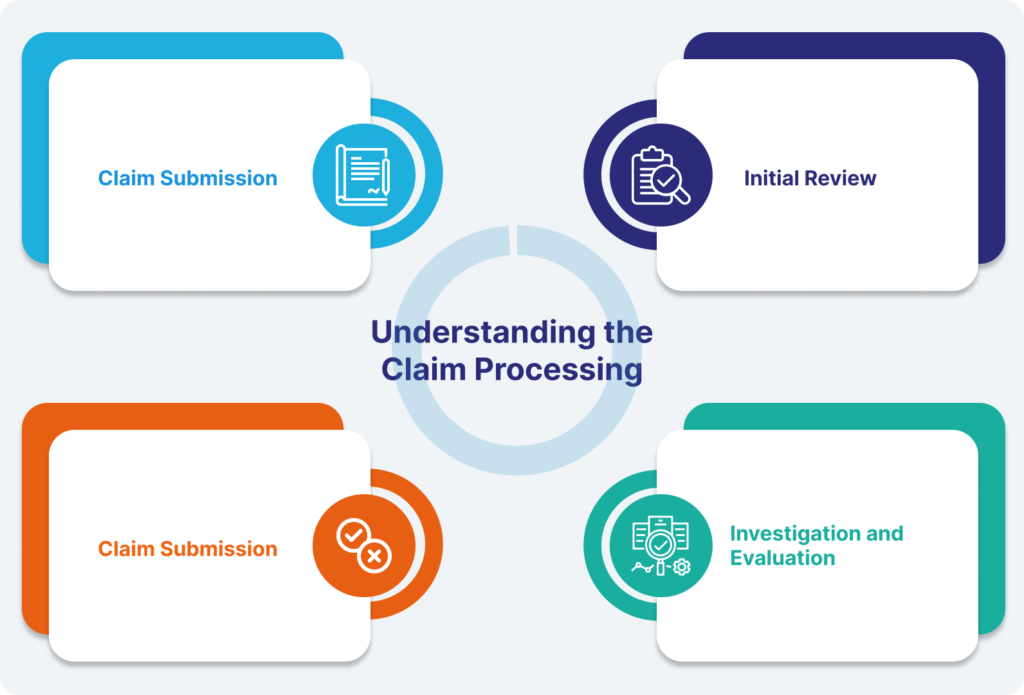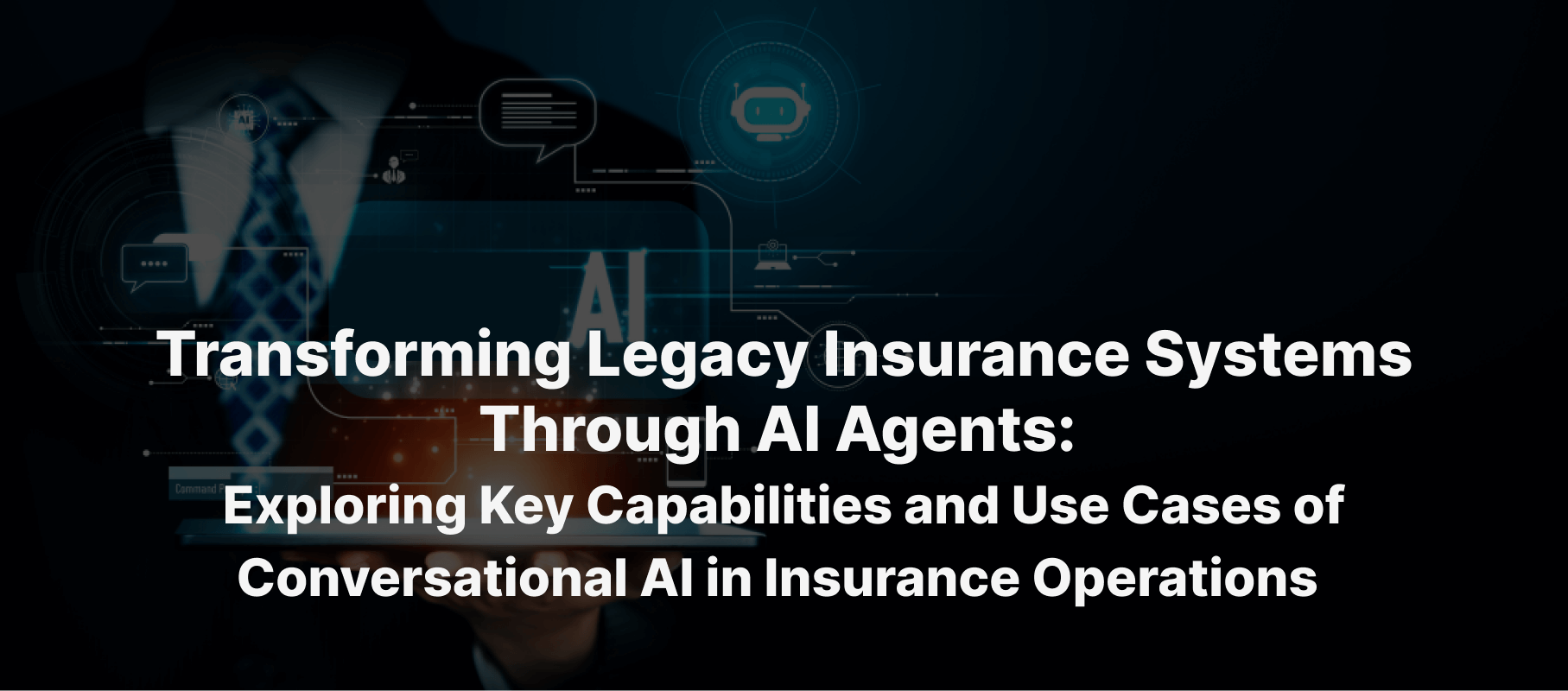Expediting Claims Processing in the Insurance Industry through Analytic Process Automation
The world is inching towards a phase where everything, including financial transactions, entertainment, shopping, and more, is attainable in a fraction of the time. But have you ever wondered how all the industries are able to provide this? Well, it is through data that has been collected from various sources to understand, study, and infer information to provide individuals with what they want and when they need it. But why not the insurance industry, although it has been provided with all the data, cannot achieve seamless and expedite claim processing?
The insurance industry involves a series of operations to be performed, which is time-consuming and laborious owing to the analysis, streamlining, and integration of data from multiple sources. An analytic process automation solution will help provide insurance employees with error-free and real-time decision-making solutions that will help not just expedite the claim process but also enhance efficiency and improve customer satisfaction.
This blog explores the claim processing steps and then examines how analytic process automation features and their role contribute to accelerating the claims process.
Understanding the Claim Processing
Before analysing the significance of analytic process automation in the insurance industry, let’s understand the process involved in claim processing.
Claim Submission: As a first step, the insurer reports the incident or damage that has happened with proper documents and photographs to the insurance company to make sure the reported incident is eligible for compensation. Once the claim has been submitted, the policyholder is entitled to fill out a form with details regarding the claim, including
- Time of incident
- Extent of damage
- Policy number
Initial Review: Once the claim has been submitted, the insurance company comes into the picture, where they will primarily analyse the claim in regards to:
- Nature of the incident, which will notify the insurance company about the type of claim being initiated by the claimant. For example, is it a car accident, property damage, or health-related issues?
- Policy coverage, where the insurance company checks the scope of the claim.
- Information verification to check on the accuracy and reliability of the data provided by the insurer by cross-checking across external records and other relevant data sources.
By doing so, the insurance company can quickly identify any errors or potential frauds, if any, reducing the likelihood of unnecessary delays.
Investigation and Evaluation: If needed, the insurance company can further extend the verification of the claim by examining the incident or damage in person. For example, for a health-related claim, the insurance company reviews the medical reports to confirm the extent and cause of injuries or disease. This helps the insurance company check for any unusual pattern of claims or any other red flags in the claim submission, preventing fraudulent claims, and also ensure the raised claim is adhered to regulations and compliant measures.
Once the claim has been double-checked by the insurance company, they move onto the calculations of the damage or theft that happened. This helps the company determine the compensation to be provided to the policyholder.
Approve or Deny: Once the verification has been completed, it is time for the insurance company either to accept or deny the claim based on the obtained information. If the insurer finds any irregularity or error in the claim processing, such as the claim not meeting the policy coverage or the evidence not supporting, the insurer immediately denies the claim processing, stating the incident to be fraud.
On the other hand, if the claims are proved to be legible, the insurer moves to the final stage of executing or processing the claim, where the amount is calculated based on the extent of loss, variable deductibles, and policy coverage. After which, the policyholder is intimidated by an approval notification with the necessary information from the insurance company. And finally the amount is issued to the client.
Thus, the working process of a claim processing is explained, where it is possible to study the nuances and challenges the insurance industry undergoes to execute an error-free and reliable claim processing. With this approach, achieving expedited claim processing that is error-free and meets customer demands is crucial and complex.

Analytic Process Automation: Essential Features Explained
Switching to an analytic process automation solution that combines data analytics and process automation helps streamline and automate all end-to-end processes, helping the insurance industry act on data more meticulously and effectively, leaving no turns for fraud or error to occur. Before addressing the role of analytic process automation in claims processing, let’s understand the features that support claim processing.
Data Integration
- Equipped with integration engines and connectors, the analytic process automation platform supports multiple protocols that facilitate the retrieval of data from various sources, such as databases, cloud services, and third-party applications.
- The platform also handles different data schemas by automatically mapping fields between source systems. It also leverages event-driven architecture that enables data analytics and processing to be performed as soon as data is made available.
- The incorporation of stream processing frameworks enables real-time data ingestion and processing, minimising data flow from source to analysis with low latency and reduced delay.
Advanced Analytics
- The analytic process automation uses algorithms like linear regression, decision trees, and time series analysis to create predictive models that help forecast trends and analyse historical data.
- The platform also supports deploying pre-trained models that help automate tasks such as anomaly detection, pattern recognition, and data classification.
- The analytic process automation features in-built data visualisation engines that help render data into interactive dashboards, allowing users to drill down or filter large volumes of data without compromising on speed and accuracy.
Self-Service Analytics
- The drag-and-drop functionality of the analytic process automation platform enables even non-technical users to build data pipelines, create models, or design dashboards automatically by managing data flow and transformations.
- The platform also supports multi-user environments that support concurrent access and real-time collaboration, where changes are tracked and insights are shared, facilitated by cloud-based infrastructure and version control mechanisms.
Automation of Workflows
- Automates repetitive tasks like data entry, validation, and verification through the use of automation scripts or bots. These scripts interact directly with databases and are triggered by predefined events or schedules without the need of manual intervention.
- With an orchestration engine, the platform manages the entire workflow process from start to finish, where the engine sequences and automates tasks across various systems. The engines also handle dependencies, errors, and retires, ensuring every process involved is streamlined and executed accurately without any manual support.
Thus, the features of an analytic process automation solution explain how insurance claim processing can be benefited if utilised in the right way.
The Role of Analytic Process Automation in Expediting Complexities in Claims Processing
Now, let’s analyse how analytic process automation solutions contribute to various aspects of claim processing that have been throwing challenges for manual labour in expediting the process.
Data Integration
- Equipped with integration engines and connectors, the analytic process automation platform supports multiple protocols that facilitate the retrieval of data from various sources, such as databases, cloud services, and third-party applications.
- The platform also handles different data schemas by automatically mapping fields between source systems. It also leverages event-driven architecture that enables data analytics and processing to be performed as soon as data is made available.
- The incorporation of stream processing frameworks enables real-time data ingestion and processing, minimising data flow from source to analysis with low latency and reduced delay.
Data Integration
The first challenge in claim processing that most insurers undergo is to fetch the data or documents related to the claim. This is achieved through unified data access in analytic process automation, where a range of connectors and APIs are integrated to extract data from sources such as police records, policyholder databases, medical reports, and other external logs either in real-time or at scheduled intervals. The platform also supports real-time data synchronisation, ensuring that any update or change in the claim information gets automatically reflected in the unified data model.
The aggregated data is then loaded into the unified data model, empowering the insurer with unified access to all information pertaining to the claim, eliminating the need for manual intervention to retrieve or update data. This complete access helps insurers do an in-depth examination of the dataset, where they can analyse patterns, evaluate accuracy, and make better informed decisions.
Automating Claim Assessment
The analytic process automation platform utilises robotic process automation solutions to handle repetitive tasks such as entering data from claim forms. This is achieved by creating bots that are trained to extract data from pdfs, emails, and other claim submissions, minimising human intervention. The extracted detail is scanned and verified using optical character recognition and machine learning algorithms, enhancing the accuracy and efficiency of insurers.
This initial assessment of the claims against policy coverage and the extent of damage helps insurers perform preliminary evaluations to determine whether the claim meets the basic criteria for processing.
Fraud Detection
The need to check on claims for any fraudulent activities before processing them is one of the major tasks insurers are entitled to, and this is supported by the rule engines in analytic process automation solutions. Predefined based on various factors such as historical data, claim frequency, claim nature, policy condition, payment volume, and type of incident, the rule engine helps trigger events that are unusual or indicative of fraud.
The platform also leverages advanced data analytics and machine learning algorithms to identify patterns in claim data, analyze historical claim records, and investigate customer behavior. Any deviations from the usual claim process are flagged immediately, and a fraud risk score is assigned for the claim based on the likelihood of fraud reported in the submission. Claims with a higher fraud score are notified to the insurer for immediate evaluation and investigation, whereas claims with a lower risk score are sent for standard processing
Informed Decision-Making
Once all the analysis and verification are done, the advanced data analytics generate the insights and consolidate them into the visualisation dashboard, where the insurer is presented with a data-backed detail for each claim. This helps the insurance company make decisions regarding claim approval, denial, or adjustment. For example, if a claim has a high risk score, the claim can be highlighted in red, denoting that it is not safe or appropriate to further process the claim. This sound decision-making is what is lacking in the traditional claim processing system.
Claim Expedition and Customer Enhancement
The key claim processing activities are all efficiently handled by the analytic process automation platform, reducing manual intervention for data entry, document verification, and decision-making. Thus, not just expediting the claim processing but also improving customer satisfaction. The platform also supports task management, where the claims are processed based on the priority level. Urgent and complex claims are processed and settled instantly.
As a final touch, the processed claims are notified to the policyholder through personalised emails or messages that include all necessary information related to the settlement. This personalised communication will help the insurance company promote a transparent work culture where the policyholder feels they are being kept informed and engaged with all activities surrounding their claims, leading to trust and satisfaction.
Thus, the role of analytic process automation solutions in claim processing indicates that automation is the next revolution that the insurance sector needs to focus on to conduct businesses that are not just next-gen but also customer-centric
Future-Proof Your Business with SquareOne’s Industry Expertise
Every business needs a partner to help them fully leverage the potential of the latest solutions and services. SquareOne is that partner—bringing extensive experience in guiding businesses of all sizes to achieve their goals. With tech experts across the globe, SquareOne ensures your business receives the dedicated focus it needs to succeed. With 15 years of industry experience, SquareOne is ideally positioned to offer analytic process automation solutions in collaboration with industry leaders. Prepare your business for the future with SquareOne today!
Conclusions
To conclude, the insurance industry has long struggled with the challenges of expediting claim processing, a task that carries significant weight for those affected. The complexity and regulatory requirements of the sector make timely payouts a daunting task, as each claim must be meticulously verified, examined, and evaluated. This is where automation becomes essential. Analytic process automation allows the insurance sector to merge data analytics with process automation, streamlining and automating every aspect of claim processing. Partnering with a leading digital transformation company like SquareOne enables businesses to fully harness this technology, ensuring they stay ahead by meeting customer demands promptly. Elevate your business in the insurance sector by expediting claim processing with the right solutions and partner.













